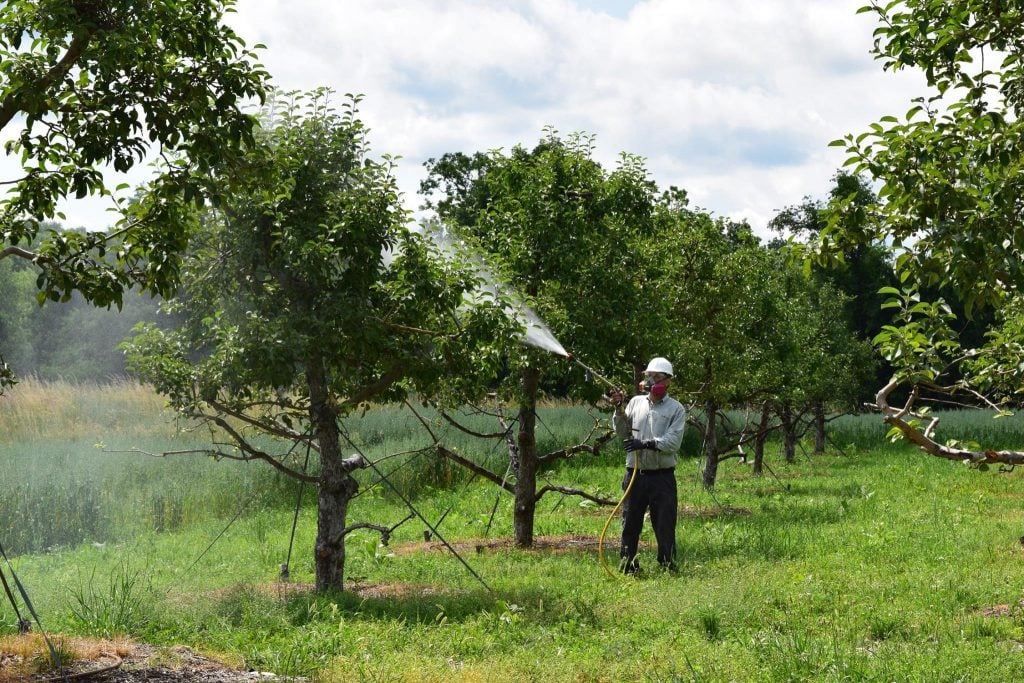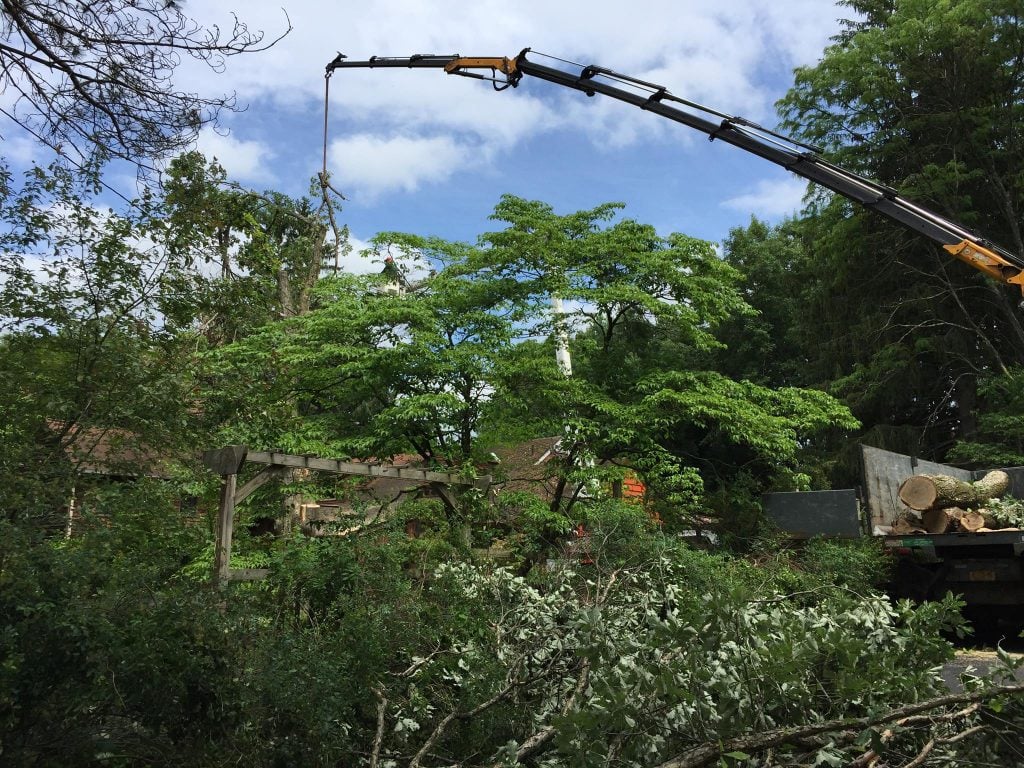It’s not uncommon for homeowners to forget about, or ignore their trees in winter. However, winter is actually the perfect, and most important time, to start planning your tree, plant health, and pest control plans for the warmer months.
As we quickly approach March, spring will be here before you know it. So, what should you be doing now to plan for your tree’s future?
- Pest Control
- Winter/Early Spring Pruning
- Inspect for Winter Damage
- Mulching and Fertilization
- Book a Consultation
- Pest control
 Insects and disease can not only destroy the beauty and health of your trees/plants, but they can also spread disease to your family. The most common example of disease spreading pests, especially in the Hudson Valley, are ticks. These ticks are often spread by rodents and deer. With ticks comes the increased chance of Lyme’s disease, which can be dangerous to your family members and/or pets. By driving deer and rodents away from your property, we can help keep the ticks they carry away too.
Insects and disease can not only destroy the beauty and health of your trees/plants, but they can also spread disease to your family. The most common example of disease spreading pests, especially in the Hudson Valley, are ticks. These ticks are often spread by rodents and deer. With ticks comes the increased chance of Lyme’s disease, which can be dangerous to your family members and/or pets. By driving deer and rodents away from your property, we can help keep the ticks they carry away too.
When managing pests and insects, applications used to control these pests can often be toxic. At Red Cedar, we understand this and make sure to use the most organic and non-toxic insect and pest control applications available. We also use an integrated approach to managing insects and disease on your property. Since bugs are dormant in winter, it is important to plan your pest and disease management now, prior to entering the warmer months when insects are most active.
- Winter/early spring pruning
Winter pruning can be beneficial for a few reasons. Insects are attracted to fresh cuts and because of this, after pruning or trimming trees, your trees may become more susceptible and vulnerable to infestation and damages caused by these insects. In winter, most insects are not active (as mentioned above), making it a great time for this maintenance. Also, during the cold months, trees store their energy within their roots. Because of this, pruning and branch removal in the winter lessens the amount of energy taken away from the tree. It is important to note though, that pruning during other seasons too is necessary, and perfectly safe.
- Inspect for winter damage
Since trees are bare in winter, the colder months are best for inspecting your trees. The skeleton of the tree is fully visible and no areas are obstructed by leaves, making inspection quicker and easier. Checking for hazardous branches is one of the most important things to look for, especially in winter. Any splintered branches that can fall and cause damages to people or surroundings below it should be taken care of. In winter, your trees will likely undergo increased weight with buildup of snow and ice, making the chances of breaking these ill branches higher. Additionally, visible signs of structural defects should receive attention before the next growing season, since growing and foliage also increase weight. Inspection can help to create a more accurate plan for the trees in spring.
- Proper mulching and fertilization
The quality of the soil around a tree’s roots determines the overall health of the tree. To reach its full potential, all nutrients need to be efficient in the soil. As mentioned above, trees store their energy in their roots in winter, meaning, if their soil is deficient, their health can struggle more severely during their dormant months. Fall is an ideal time to fertilize and prepare your trees for winter, but it is also very important to plan your spring fertilization strategy now. Fertilizing in the hottest months can actually damage plant life, due to the natural slowing down of growth during high heat. Mulching and fertilization is just one tool our arborist and tree service specialists at Red Cedar use to restore soil fertility and reach the goal of a healthy tree route system.
- Book consultation
 With any projects or maintenance on your property, planning ahead is extremely important. Now is a great time to book a consultation with your tree and plant health professional to discuss the existing health, and proactive health plan for the current trees and plants on your property. It is also a great time to discuss any additions you may be interested in incorporating this spring. What is your proactive pest control plan? Do you have a maintenance plan? Is there any tree removal needed? Did you know that Red Cedar uses a crane for specific tree removal situations that could otherwise be extremely challenging and potentially dangerous? With this crane, job completion is much easier, quicker, and more efficient.
With any projects or maintenance on your property, planning ahead is extremely important. Now is a great time to book a consultation with your tree and plant health professional to discuss the existing health, and proactive health plan for the current trees and plants on your property. It is also a great time to discuss any additions you may be interested in incorporating this spring. What is your proactive pest control plan? Do you have a maintenance plan? Is there any tree removal needed? Did you know that Red Cedar uses a crane for specific tree removal situations that could otherwise be extremely challenging and potentially dangerous? With this crane, job completion is much easier, quicker, and more efficient.
We know you are probably imagining the warmer months and the good news is we are only 24 days away! This means now is the time to start planning your pest control, landscaping, tree health plan, and any updates you may need or want for your property. Book your consultation today!


